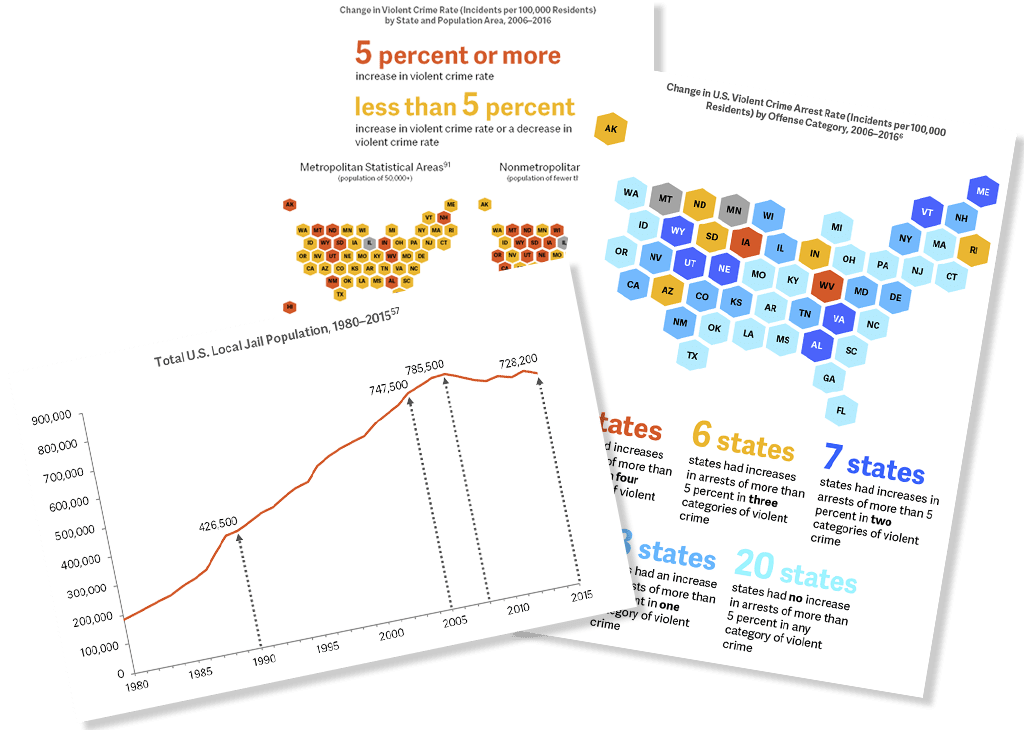50 States.
50 Unique Sets of Public Safety Challenges.
Although crime rates across the country are near all-time lows, each state faces a unique combination of public safety challenges, including increasing crime rates in some communities, growing numbers of people who have mental illnesses entering county jails and state prisons, spiking opioid and other drug-related deaths, high recidivism rates, rising correctional populations and costs, pervasive barriers to employment and housing for people with criminal records, and more. These challenges may appear overwhelming, but many states are using innovative approaches to tackle them and are achieving results.




